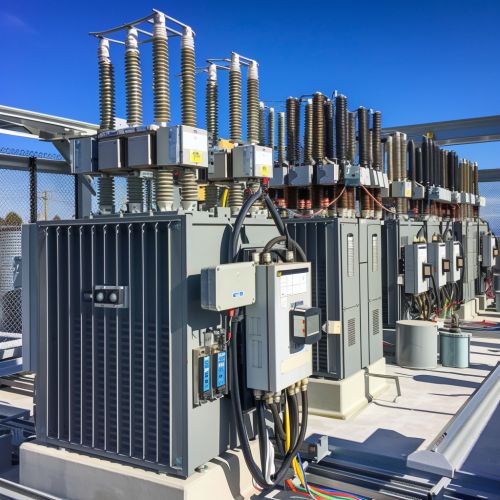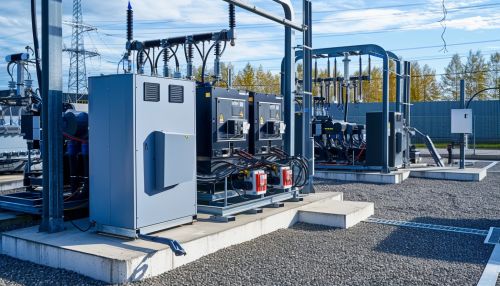Electric Power Distribution
Overview
Electric power distribution is the final stage in the delivery of electric power from its generation source to the end consumers. It carries electricity from the transmission system to individual consumers. Distribution networks are operated at a lower voltage level compared to transmission networks.
History
The first electric power distribution systems installed in European and US cities were used to supply lighting: arc lighting running on very high voltage (around 3000 volts) alternating current (AC) or direct current (DC), and incandescent lighting running on low voltage (100 volt) direct current.
Distribution Network
The distribution network starts at the transformers, which reduce the voltage from the high value used in the transmission network to a value suitable for local distribution. This is typically in the range of 7.2 to 36 kV for a typical residential or commercial customer.
Voltage Levels
The voltage delivered to equipment such as lighting and motor loads is standardized, with an allowable range of voltage over which equipment is expected to operate. Standard power utilization voltages and percentage tolerance vary in the different mains power systems found in the world.
Power Quality
Power quality is a term describing the degree of deviation from the nominal supply voltage that is being delivered to the connected equipment. The quality of power can be affected by several factors including the type and condition of the distribution network, the type of load and the proximity of the load to the power source.
Power Distribution Equipment
Electric power distribution systems are made up of a series of electrical equipment and systems that are used to distribute power to the end user. This equipment includes transformers, circuit breakers, switches, and meters.


Distribution Grid
The distribution grid is the portion of the power system that distributes power to the customers. The grid includes the lines, poles, transformers and other equipment that is used to deliver electricity from the transmission system to the end user.
Smart Grid
The smart grid is the use of digital technology to improve reliability, security, and efficiency of the electric system. This includes the use of sensors, communications, computational ability, and control to enhance the overall functionality of the electric power system.
Distributed Generation
Distributed generation, also known as on-site generation, dispersed generation, embedded generation, decentralized generation, decentralized energy or distributed energy, generates electricity from many small energy sources.
